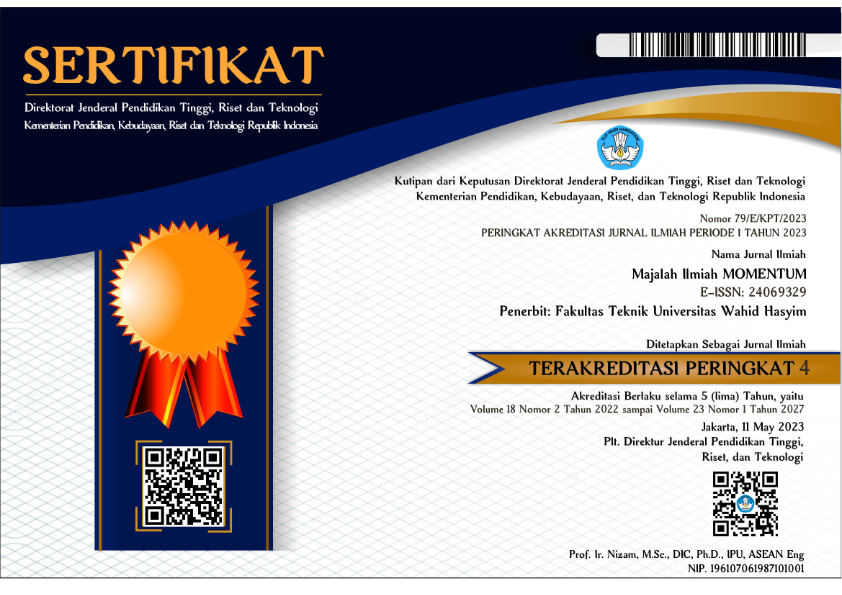PREDIKSI KELARUTAN THEOBROMINE PADA BERBAGAI PELARUT MENGGUNAKAN PARAMETER KELARUTAN HILDEBRAND
DOI:
https://doi.org/10.36499/jim.v8i1.280Abstract
Indonesia sebagai penghasil kakao ketiga terbesar ketiga diduniaberpotensi menghasilkan limbah berupa kulit biji buah kakao. Kulit biji buah
kakao mengandung protein yang dapat dimanfaatkan sebagai pakan ternak serta
theobromine yang dapat digunakan sebagai produk farmasi. Theobromine dari
kulit biji buah kakao dapat dipisahkan melalui proses ekstraksi. Salah satu
faktor yang mempengaruhi proses ekstraksi adalah jenis pelarut. Pemilihan
pelarut pada proses ekstraksi dapat dilakukan berdasarkan prediksi kelarutan
solut menggunakan parameter kelarutan Hildebrand. Nilai parameter kelarutan
Hildebrand theobromine adalah 20,977 MPa1/2. Pelarut yang memiliki deviasi
nilai parameter kelarutan Hildebrand yang kecil adalah metilen klorida dan
aceton sehingga dapat diartikan bahwa theobromine mudah larut dalam metilen
klorida dan aceton.
Kata Kunci: theobromine, parameter kelarutan Hildebrand
Downloads
Published
Issue
Section
License
Authors who publish with this journal agree to the following terms:
The journal allow the authors to hold the copyright without restrictions and allow the authors to retain publishing rights without restrictions.
Authors retain copyright and grant the journal right of first publication with the work simultaneously licensed under a Creative Commons Attribution License that allows others to share the work with an acknowledgement of the work's authorship and initial publication in this journal.
Authors are able to enter into separate, additional contractual arrangements for the non-exclusive distribution of the journal's published version of the work (e.g., post it to an institutional repository or publish it in a book), with an acknowledgement of its initial publication in this journal.
Authors are permitted and encouraged to post their work online (e.g., in institutional repositories or on their website) prior to and during the submission process, as it can lead to productive exchanges, as well as earlier and greater citation of published work (See The Effect of Open Access).

This work is licensed under a Creative Commons Attribution 4.0 International License.







